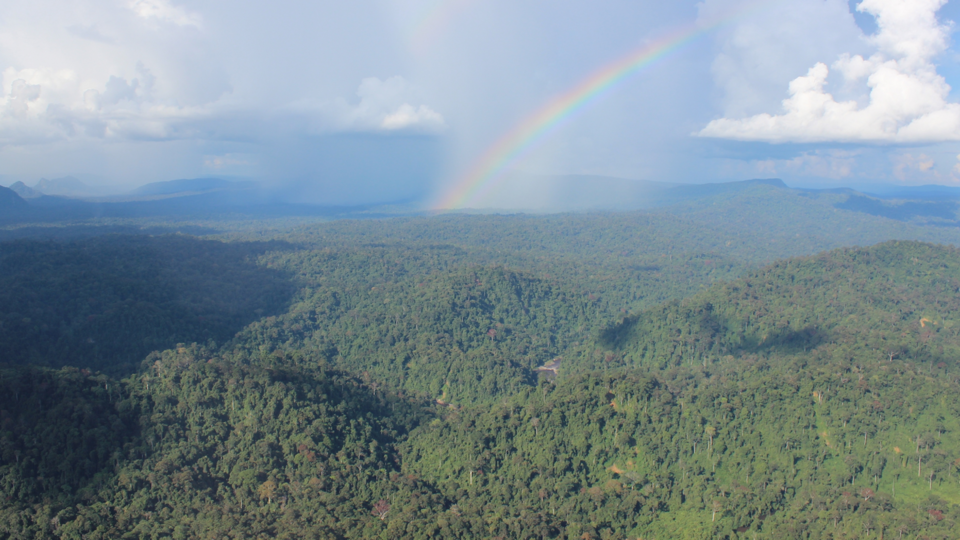Science News
Solutions to Save Wild Borneo

Borneo is the third largest island on our planet (larger than Madagascar!) and its rainforest is one of the oldest in the world. The rainforest is home to thousands of species, including orangutans and elephants, but it’s changing rapidly. Since 1973, the Bornean forests have declined 30%, mostly making room for lucrative palm oil plantations. The island is also shared by three separate countries—Malaysia, Indonesia, and Brunei—which can be tricky when trying to conserve the land, or create land-use policy.
But Rebecca Runting and Erik Meijaard from the University of Queensland have some ideas to continue to promote economic growth on the island and save the forests at the same time. Publishing today in Nature Communications, the scientists and their colleagues provide four different land-use and policy options to achieve this goal, keeping 50% of the island’s land as forest and protecting habitat for orangutans and elephants along the way.
The project came about Runting says, because “High rates of forest conversion and degradation over previous decades has prompted the three nations on Borneo to pledge to protect their natural resources, but at the same time, Malaysia and Indonesia have planned to greatly expand the area of oil palm and timber plantations. We wanted to see if it was possible to meet these conflicting goals on Borneo, and determine the best way to achieve the range of targets.”
The team divided the island into several different land-use categories: protected, palm oil plantations, logging (industrial and reduced-impact), mining, urban, plus other forest and non-forest classifications. And then the team looked at how governmental policy, coordination, and working across political boundaries could affect and change these different land-use areas.
The scientists found that, compared to a baseline scenario of business-as-usual, adopting a coordinated planning approach would allow all three jurisdictions to retain substantial amounts of habitat, meet their development goals and achieve substantial economic savings. Under such a cooperative scenario some land areas would need to swap their current designations from protected areas to agricultural land, and vice versa.
And if they proceed business as usual, with no policy changes? “Other studies by our team and other researchers are increasingly highlighting the significant dangers of ignoring environmental values of forests,” Meijaard explains. “This aspect was not covered in the present study because these values are hard to quantify. But in a different study that we conducted, which involved interviewing over 5,000 people across Borneo, it was very clear that people are affected by the negative environmental impacts of deforestation. Especially temperature increases of up 10 degrees Celsius on average following deforestation are affecting people's well-being, disease outbreaks, crop yields and other factors. Similarly, flooding events in Borneo are becoming more frequent and severe, affecting up to 500,000 people every year in Indonesian Borneo alone. The business as usual scenario mostly looks at benefits of forest use and conversion, but not at costs. Our proposed planning approach integrates costs and indicates that there are much better ways to manage Borneo's lands.”
And the team says that these results could apply to areas beyond Borneo where high levels of biodiversity come into conflict with geopolitical borders. “Many tropical environmental issues span national boundaries and require international collaboration to effectively address them,” Meijaard says. “Our findings from Borneo could apply to the Amazon and Congo Basins and other parts of the world where deforestation and land use intensification are taking place. In these areas collaboration on environmental planning as well as on other issues of international importance could help slow down environmental degradation and the negative impact this has on biodiversity and the lives of people.”
Image: Erik Meijaard